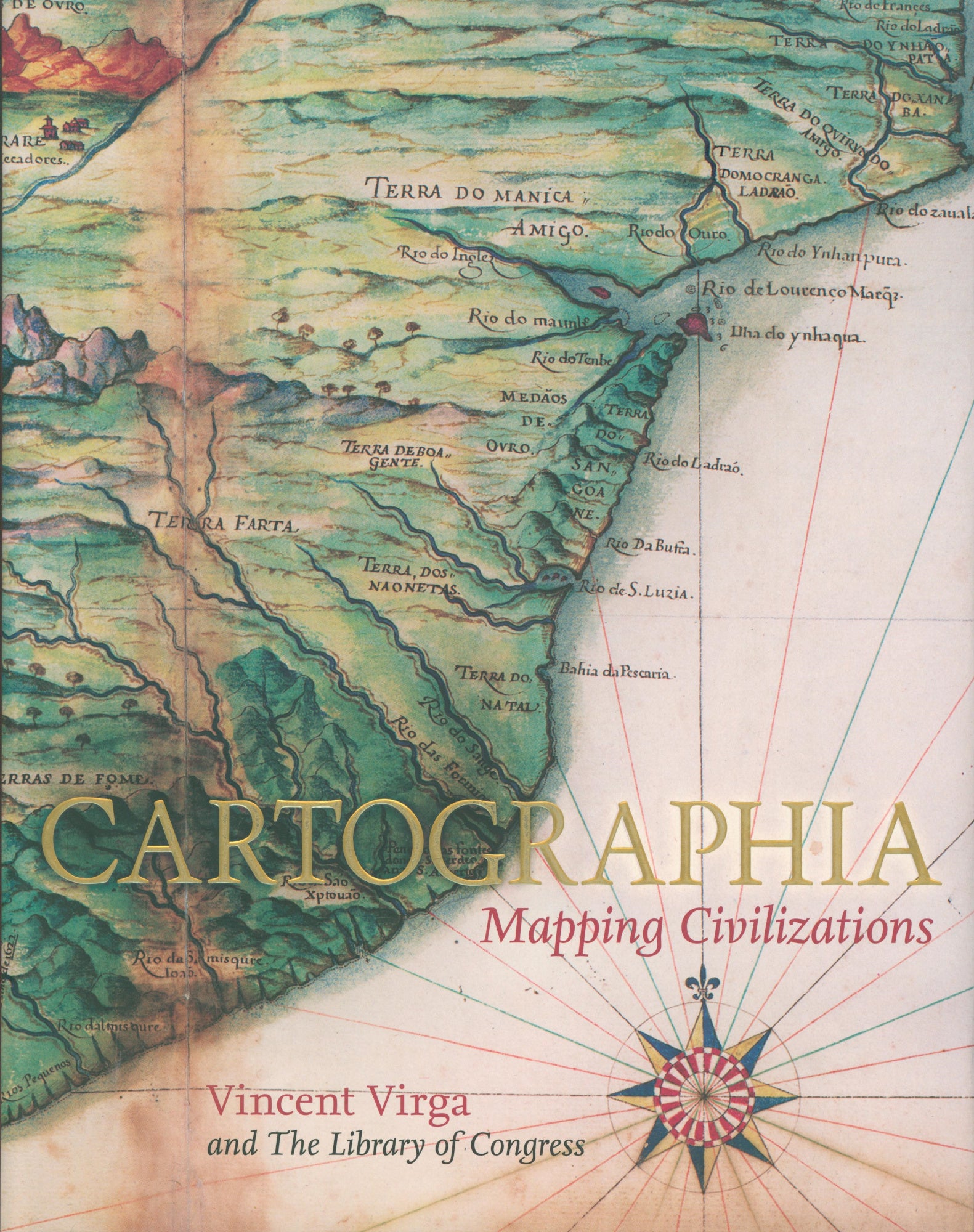Hardcover, 272 pages
English language
Published Oct. 25, 2007 by Little, Brown and Company.

Hardcover, 272 pages
English language
Published Oct. 25, 2007 by Little, Brown and Company.
Cartographia offers a stunning array of 200 beautiful, important, and fascinating maps from the world’s largest cartographic collection at the Library of Congress. These maps show how our idea of the world has shifted and grown over time, and each map tells its own unique story about nations, politics, and ambitions. The chosen images, with their accompanying stories, introduce the reader to an exciting new way of “reading” maps as travelogues—living history from the earliest of man’s imaginings about planet earth to our current attempts at charting cyberspace.
Among the rare gems included in the book are the Waldseemüller Map of the World from 1507, the first to include the designation “America”; pages from the Ortelius’s Theatrum Orbis Terrarum of 1570, considered the first modern atlas; rare maps from Africa, Asia, and Oceania that challenge traditional Western perspectives; William Faulkner’s hand-drawn 1936 map of the fictional Yoknapatawpha County, Mississippi; and …
Cartographia offers a stunning array of 200 beautiful, important, and fascinating maps from the world’s largest cartographic collection at the Library of Congress. These maps show how our idea of the world has shifted and grown over time, and each map tells its own unique story about nations, politics, and ambitions. The chosen images, with their accompanying stories, introduce the reader to an exciting new way of “reading” maps as travelogues—living history from the earliest of man’s imaginings about planet earth to our current attempts at charting cyberspace.
Among the rare gems included in the book are the Waldseemüller Map of the World from 1507, the first to include the designation “America”; pages from the Ortelius’s Theatrum Orbis Terrarum of 1570, considered the first modern atlas; rare maps from Africa, Asia, and Oceania that challenge traditional Western perspectives; William Faulkner’s hand-drawn 1936 map of the fictional Yoknapatawpha County, Mississippi; and even a map of the Human Genome.